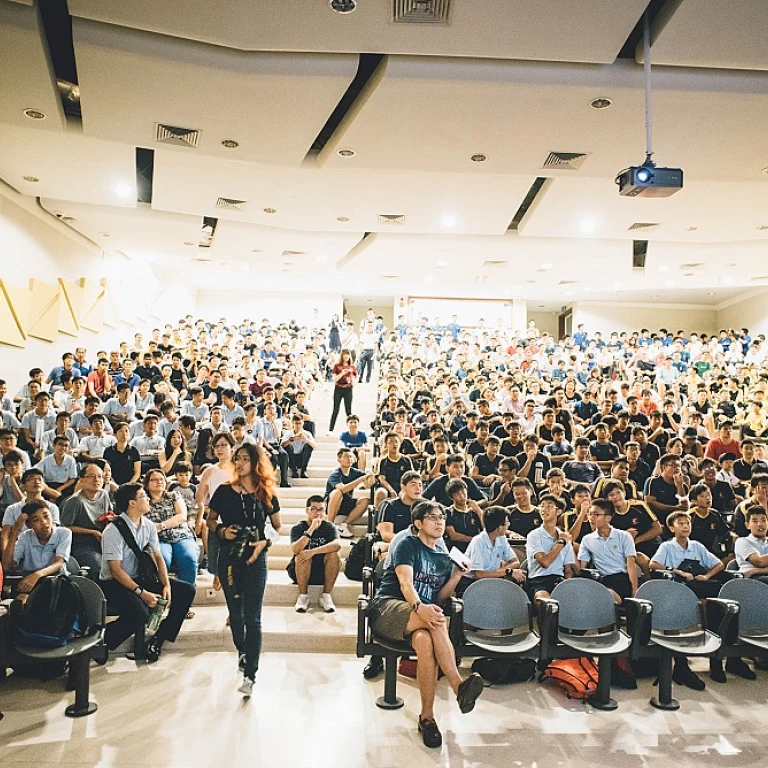The Need for Speed in Hiring
The Urgency of Fast Hiring
In today's dynamic and highly competitive job market, speed has become a critical factor in the hiring process. Organizations that manage to swiftly hire qualified candidates gain a distinctive advantage over their competitors. The rapid pace of digital transformation has increased the pressure on businesses to innovate and perform. Thus, every delay in recruitment not only risks losing top talent to competitors but also potentially stalls business growth and innovation.
Hiring speed isn't just about rapidly filling positions; it's also about capturing the interest and enthusiasm of the best candidates. Prolonged hiring processes can lead to candidate disengagement, resulting in the loss of promising potential employees. Furthermore, in industries where skill shortages are rife, the gap between identifying a need and fulfilling it must be minimized to prevent operational challenges.
This urgency to accelerate recruitment involves addressing various operational inefficiencies and leveraging modern tools and technologies. Streamlining the recruitment process and building a strong talent pipeline are crucial steps, as they'll foster an environment where vacant positions are filled with utmost efficiency. Moreover, the role of hiring managers and recruiters in expediting processes while ensuring a superior candidate experience is more vital than ever.
The need for speed in recruitment is not solely about quantity but improving quality – enhancing the overall candidate experience, which in turn improves hiring outcomes. For actionable insights on effectively enhancing the hiring experience, consider exploring this strategic approach
building a winning candidate experience strategy.
Streamlining the Recruitment Process
Eliminating Bottlenecks in the Hiring Pipeline
In today's fast-paced job market, the ability to streamline the recruitment process is not just a competitive advantage; it's a necessity. Delays in the hiring pipeline can lead to missed opportunities, as top candidates often have multiple offers on the table. By identifying and eliminating these bottlenecks, organizations can drastically reduce time-to-hire while simultaneously enhancing the candidate experience.
One of the most common inefficiencies in the recruitment process is slow communication. Whether it's delayed feedback from interviewers or prolonged decision-making timelines, these delays can significantly impact the overall hiring speed. Implementing standardized processes for communication can resolve these issues. For instance, setting firm deadlines for feedback delivery can ensure that candidates are not left in the dark, leading to a more seamless and efficient recruitment process.
Additionally, job descriptions and requirements should be clear and concise. Ambiguities at this stage can lead to an influx of unqualified applicants, thereby causing unnecessary burdens on recruiters. By refining the criteria and ensuring that they are thoroughly discussed and agreed upon by all stakeholders, organizations can focus their recruitment efforts solely on those candidates who are the best fit.
Automation of routine tasks is another crucial step in the elimination of bottlenecks. By leveraging recruitment software and tools, administrative tasks such as resume screening, interview scheduling, and follow-up emails can be automated. This not only saves time but also allows recruiters to focus more on candidate engagement and assessment.
Finally, it's imperative to continuously review and optimize the recruitment process. Regularly evaluating each stage of the hiring pipeline can help identify new inefficiencies as they arise and lead to process improvements. Organizations aiming for a superior candidate experience should consider referring to
the ultimate checklist for a stellar candidate experience for insights.
By streamlining the recruitment process, companies can ensure they remain agile and responsive in a competitive market, ultimately leading to a more satisfying experience for candidates and a stronger overall workforce.
Leveraging Technology in Recruitment
Embracing Digital Transformation in Recruitment
Technology is undeniably a powerful ally when it comes to speeding up the recruitment process for a superior candidate experience. With advancements tailored to optimize each step, businesses can revolutionize how they attract, track, and hire talent. Just as enhancing the candidate experience is crucial in high-volume hiring, integrating the right tools is fundamental for efficiency and precision at every scale.
Applicant tracking systems (ATS) have become almost indispensable in today's recruitment landscape. These systems help streamline the administrative tasks associated with hiring, reducing the burden on recruiting teams and allowing them to focus more on engaging with top talent. With artificial intelligence and machine learning added into the mix, ATS can now help filter through vast numbers of resumes, automatically shortlisting candidates who best fit the job description through intelligent matching criteria.
Furthermore, technology enables real-time communication with candidates, enhancing transparency and keeping potential hires informed throughout the process. Chatbots, for instance, can answer frequently asked questions, schedule interviews, and send reminders, ensuring candidates are engaged and valued.
Another critical component is data-driven decision-making. Leveraging analytics within recruitment technology allows organizations to refine their strategies continually. Understanding patterns and candidate behaviors helps recruiters to better anticipate needs and adjust their approaches accordingly, ensuring a faster, yet thorough hiring process. To dive deeper into improving the candidate journey through these technological innovations, explore our comprehensive
candidate journey map guide.
By embracing these digital tools, organizations can reduce time-to-hire while simultaneously enhancing the experience for both candidates and hiring teams, creating an environment where top talent can be identified and brought on board swiftly and seamlessly.
Building a Strong Talent Pipeline
Nurturing a Robust Talent Network
Creating a dependable talent pipeline is a strategic move that can significantly expedite your recruitment process, ultimately leading to a more efficient and satisfying candidate experience. A strong talent network allows organizations to tap into a pool of potential candidates who are already familiar with the company’s culture, values, and expectations.
Building a talent pipeline involves proactive engagement with potential candidates long before a position opens. By nurturing relationships, companies can maintain interest and loyalty among prospective talent. Regular communication, sharing of industry insights, and updates about the organization can keep candidates engaged and informed.
Furthermore, establishing a talent pool can help organizations become less reliant on external recruiting agencies, which adds both time and expense. Instead, companies maintain a list of prospective candidates they can quickly contact when a new role becomes available, reducing the time-to-hire metric.
It’s also crucial for companies to segment their pipelines based on roles and skill sets. This segmentation allows recruiters and hiring managers to quickly identify the most suitable candidates for specific positions. Additionally, it helps tailor communication and engagement strategies based on different candidate preferences and expectations.
Investing time and resources in developing a robust talent pipeline is a strategic advantage that goes beyond immediate hiring needs. It not only accelerates hiring processes but also ensures that candidates feel valued, having established a pre-existing relationship with the organization. This proactive stance in recruitment fosters a smoother and more pleasant candidate experience, ultimately enhancing the company's employer brand in the competitive job market.
The Role of Hiring Managers and Recruiters
Empowering the Backbone of Recruitment
In the quest to expedite recruitment processes without compromising on quality, both hiring managers and recruiters stand as pivotal players. While technology and streamlined processes offer a robust foundation, human expertise and judgement remain irreplaceable.
Recruiters, often the first point of contact, set the stage for a positive candidate experience. Their ability to communicate the company's values, culture, and expectations with clarity can make a significant difference in attracting top talent. By maintaining transparent communication and providing timely feedback, recruiters help ensure a seamless journey for candidates, reducing unnecessary delays that can detract from a candidate's perception of the company.
Hiring managers, on the other hand, play a crucial role in defining and refining the requirements for open positions. They must collaborate closely with recruiters to ensure that job descriptions are clear and realistic, aligning with the broader company objectives and market dynamics. An effective partnership between these two roles can lead to faster decision-making processes, minimizing bottlenecks in the recruitment pipeline.
Furthermore, investing in training programs for both hiring managers and recruiters can boost their efficacy, leading to more informed hiring decisions. Knowledgeable teams are better equipped to leverage technology, assess data insights, and drive strategic recruitment initiatives that align with company growth goals.
Ultimately, when hiring managers and recruiters work in harmony, they not only accelerate the recruitment timeline but also create a more engaging and rewarding experience for candidates, enhancing the company's reputation as an employer of choice.
Enhancing the Candidate Experience
Creating a Lasting Impression
In today's competitive job market, enhancing the candidate experience is not just about filling positions quickly but also about creating a lasting impression on candidates. A seamless and positive candidate journey can distinguish an organization from its competitors, showcasing it as an employer of choice. So, how can companies focus on improving candidate experience while speeding up the hiring process?
First, effective communication is paramount. Candidates crave transparency and regular updates throughout their recruitment journey. An organization can minimize candidate anxiety and promote trust by keeping lines of communication open and clear. It is essential to inform candidates about what to expect at each stage, including timelines and the steps involved in the recruitment process.
A personal touch can also make a difference. Personalized communications, such as a tailored follow-up email thanking candidates for their time, can greatly enhance their perception of the organization. This approach not only humanizes the recruitment process but also shows that the company values its potential employees.
Additionally, feedback is a vital component of the candidate experience. Providing constructive feedback, whether candidates are successful or not, enhances their overall experience and reflects well on the organization. It demonstrates that the company cares about the candidate's professional development.
Consideration of accessibility and inclusion in the recruitment process is another critical factor. Ensuring that job postings, application procedures, and interviews are accessible to all individuals, including those with disabilities, broadens the candidate pool and presents the organization as inclusive and forward-thinking.
Finally, organizations should remember that the candidate experience doesn't end once the candidate is hired. Onboarding processes also play a crucial part in shaping long-term impressions. A well-structured onboarding strategy can help new employees feel welcomed, valued, and prepared to start their new roles.
Enhancing the candidate experience, while maintaining a swift recruitment process, requires a dedicated focus on clear communication, personal engagement, constructive feedback, inclusion, and comprehensive onboarding. These efforts not only contribute to a more positive experience for candidates but also benefit the organization by fostering a positive reputation and attracting top talent.








